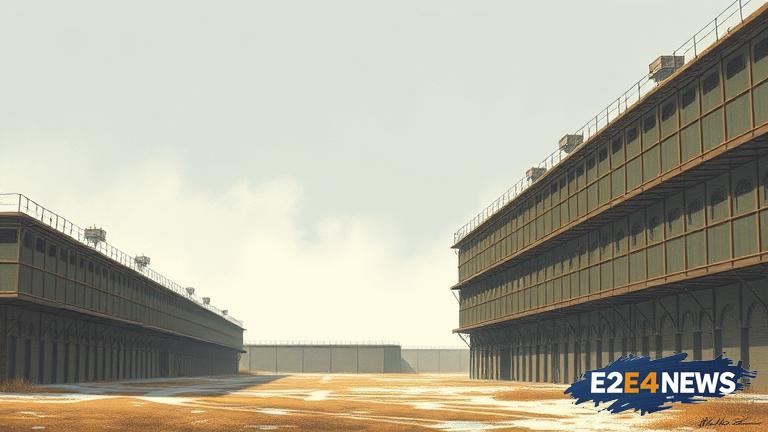The Nebraska prison system is currently facing a severe overcrowding crisis, with many facilities operating at or near maximum capacity. This has led to concerns about the safety and well-being of inmates, as well as the potential for increased violence and decreased access to rehabilitation programs. According to recent reports, the state’s prisons are currently housing over 5,500 inmates, despite being designed to hold only around 4,500. This has resulted in many inmates being forced to share cells or live in temporary housing, leading to increased tensions and stress. The overcrowding issue is not a new problem, but it has been exacerbated in recent years by a combination of factors, including increased sentencing lengths and a lack of adequate funding for rehabilitation programs. Many experts believe that the key to addressing the overcrowding issue is to focus on rehabilitation and reentry programs, rather than simply building more prisons. However, this approach requires significant funding and resources, which have been in short supply in recent years. Despite these challenges, there are some signs of progress, including the recent passage of a bill aimed at reducing sentencing lengths for certain non-violent offenses. Additionally, the state has launched several initiatives aimed at increasing access to rehabilitation programs and reducing recidivism rates. However, more work needs to be done to address the root causes of the overcrowding issue and ensure that inmates are receiving the support and services they need to succeed upon release. The Nebraska Department of Correctional Services has acknowledged the severity of the problem and is working to implement solutions, including the expansion of existing facilities and the development of new programs. However, the department faces significant challenges, including a lack of funding and a shortage of qualified staff. The overcrowding issue has also raised concerns about the potential for increased violence and decreased safety within the prisons. In recent years, there have been several high-profile incidents of violence and unrest within the state’s prisons, highlighting the need for urgent action to address the overcrowding issue. Furthermore, the overcrowding issue has significant implications for the state’s budget, as it can lead to increased costs for housing and caring for inmates. In response to the crisis, lawmakers and corrections officials are exploring a range of potential solutions, including the construction of new facilities and the expansion of existing programs. Ultimately, addressing the overcrowding issue will require a sustained and coordinated effort from state officials, lawmakers, and community leaders.
